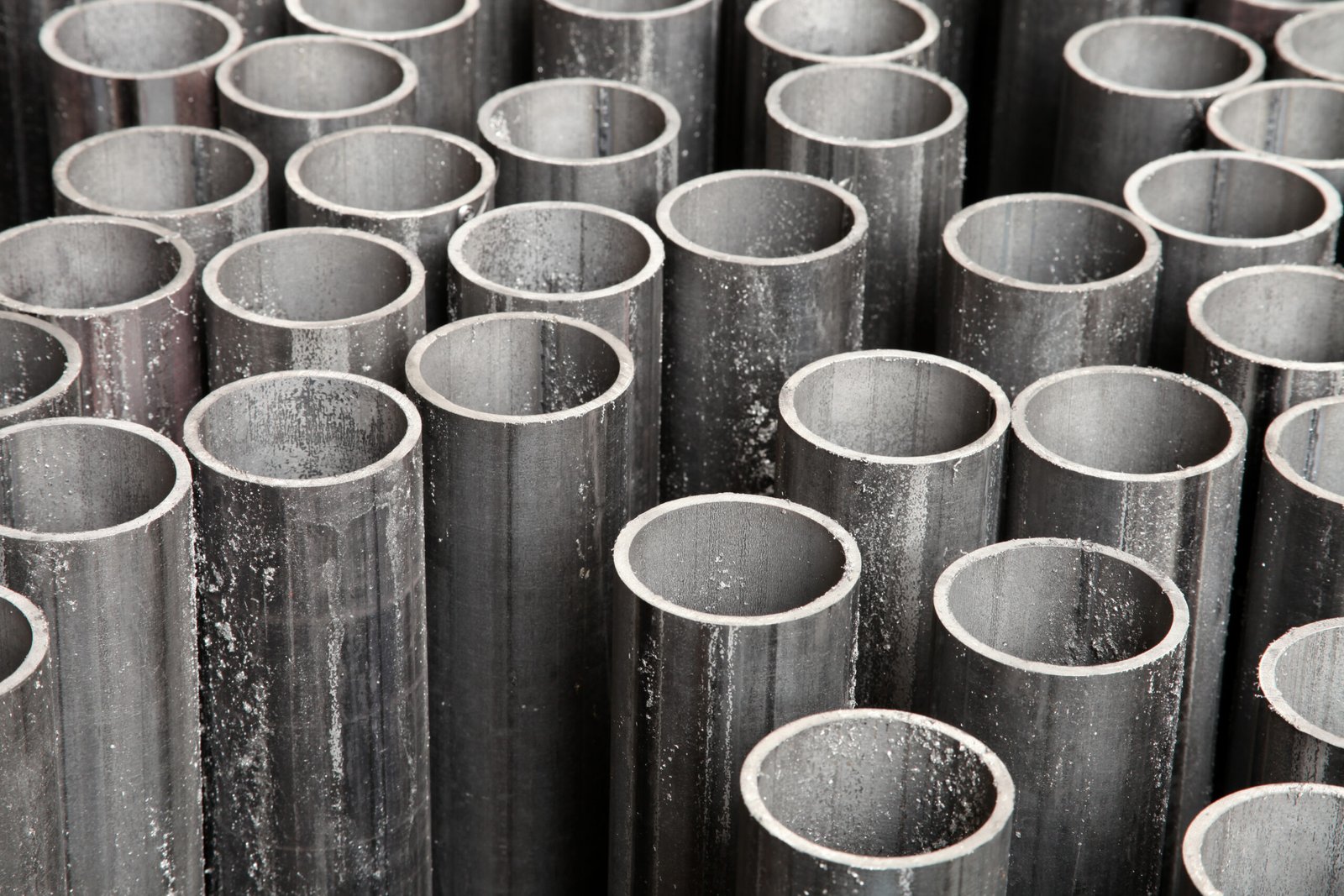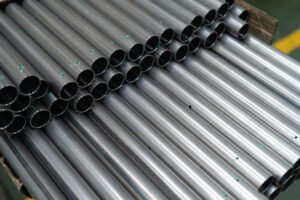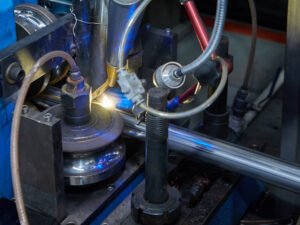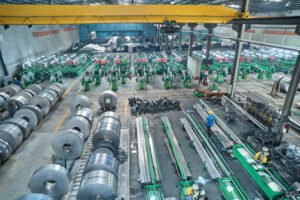Break-Even in 12 Months? ROI Math for Investing in Tube Manufacturing Machinery
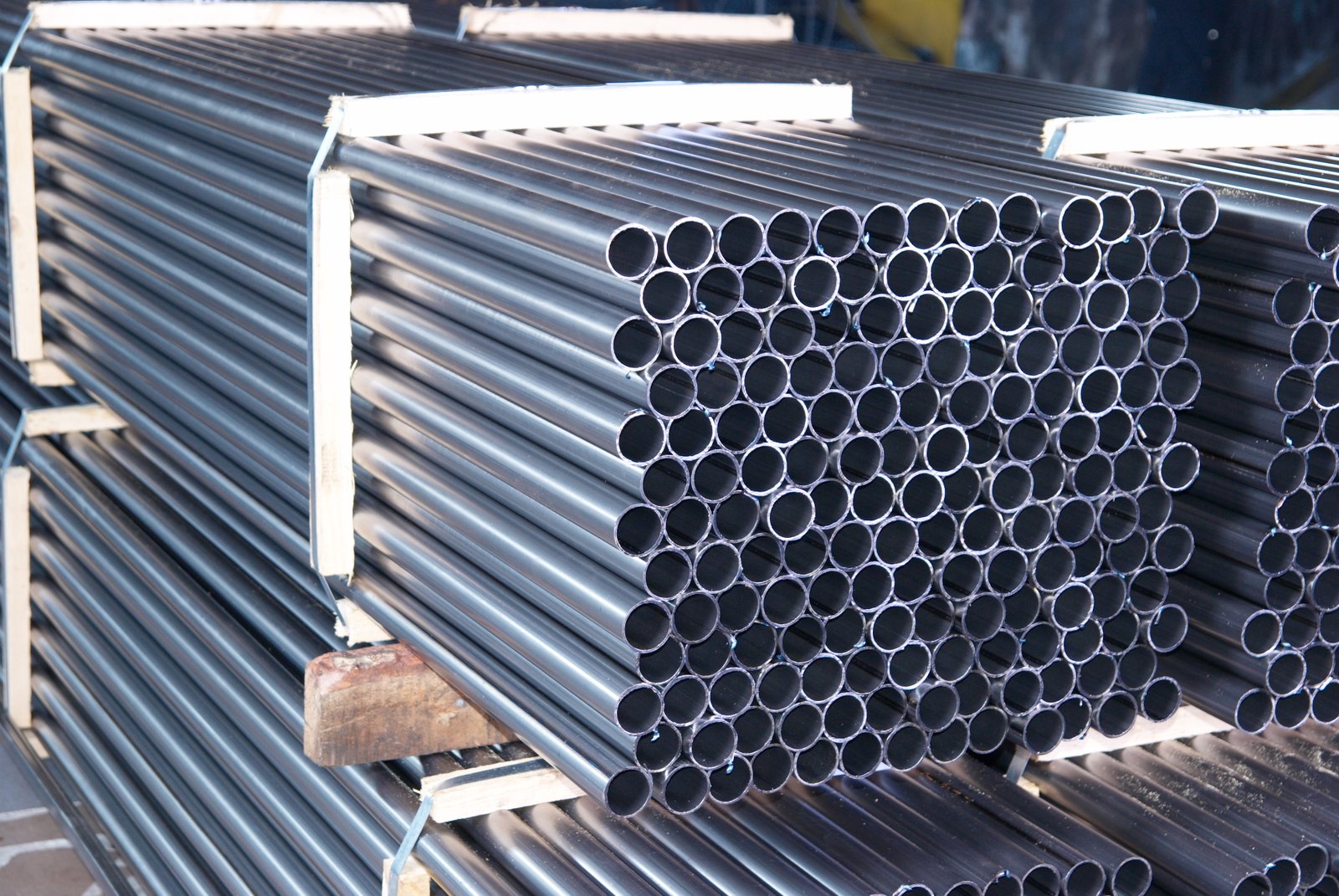
Are you hesitant to invest in new tube manufacturing machinery due to the high upfront cost and uncertain returns? This initial expense can be daunting, making you question if the long-term benefits will ever outweigh the immediate financial pressure. But what if you could achieve a break-even point in just one year?
Calculating the return on investment (ROI) for tube manufacturing machinery involves assessing the total cost of ownership against the financial gains from increased output, reduced material waste, and lower labor costs. A comprehensive analysis of these factors is essential to accurately project profitability and justify the initial capital expenditure.
Investing in advanced machinery is one of the most significant decisions a manufacturing business can make. It’s not just about replacing an old piece of equipment; it’s about strategically positioning your company for future growth and competitiveness. The numbers have to make sense, and the pressure to see a quick and substantial return is immense. This article will guide you through the essential calculations and strategic thinking required to turn that investment into a profit-generating powerhouse.
I've seen many clients in the industry grapple with this exact challenge. They understand the potential of new technology but are anchored by the fear of a negative ROI. This is where a shift in perspective is crucial. Instead of viewing it as a mere cost, we must approach it as a strategic investment in efficiency, quality, and capacity1. The goal isn't just to make tubes; it's to make tubes more profitably. By looking at factors beyond the price tag—such as reduced scrap rates, higher uptime, and the ability to enter new markets—the true value of the investment begins to emerge. This comprehensive view is the foundation of a solid ROI calculation.
What are the key factors to calculate ROI in tube manufacturing machinery?
Struggling to justify a major equipment purchase? The complexity of variables, from hidden operational costs to unpredictable revenue gains, can make a clear ROI calculation seem impossible. Without a solid framework, you risk making a decision based on incomplete data, potentially jeopardizing your financial stability and competitive edge.
To accurately calculate ROI, you must analyze three core components: the Total Cost of Ownership (TCO), quantifiable operational savings, and projected revenue enhancements . This involves evaluating not just the purchase price but also installation, training, maintenance, material utilization, energy consumption, and labor efficiency gains.
A comprehensive ROI calculation goes far beyond simply dividing the net profit by the initial investment. For a decision as critical as purchasing a new tube mill, a superficial analysis can be misleading and costly. You need to dig deeper into the numbers that truly drive your business's profitability. I always advise my clients to think of the investment as a living part of their operation, one with ongoing costs and, more importantly, ongoing opportunities for savings and profit. We’ll explore the primary inputs you need to gather for a realistic financial projection. This includes everything from the obvious—the machine's price tag—to the less apparent, such as the cost of operator training, spare parts inventory, and the long-term energy draw. By meticulously mapping out every potential cost and benefit, you transform a vague estimate into a reliable financial forecast that can confidently guide your investment strategy and secure stakeholder buy-in. It’s about building a business case that is as robust and well-engineered as the machinery itself.
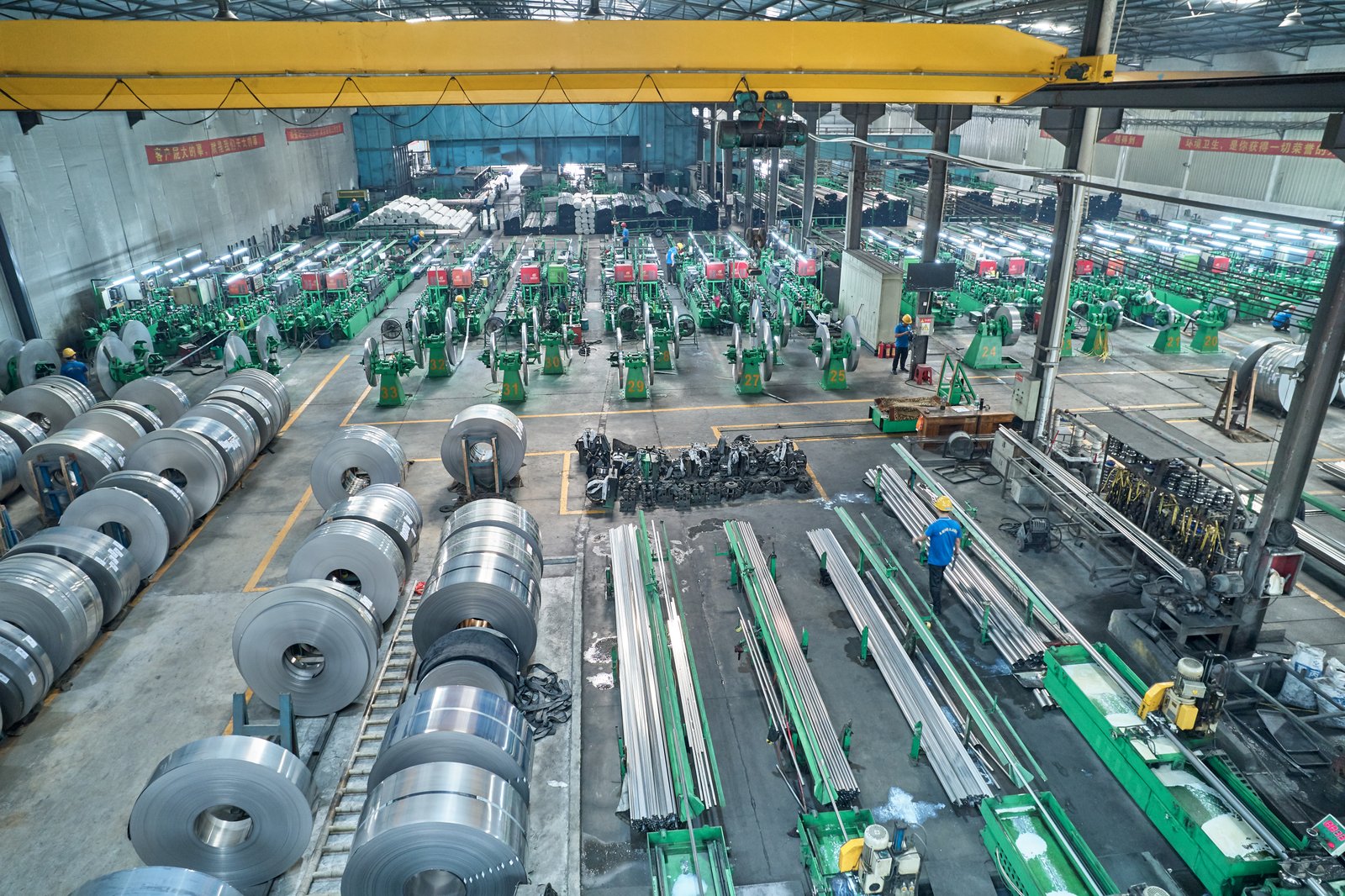
Understanding the Total Cost of Ownership (TCO)
The initial purchase price of a tube mill is just the tip of the iceberg. To get a true picture of the investment, you must calculate the Total Cost of Ownership (TCO)2. This begins with the capital expenditure but extends to include all associated costs over the machine's lifecycle. Think about freight and insurance for delivery, the cost of site preparation and installation, and the crucial initial training for your operators and maintenance staff. These are all day-one costs that must be factored into the "investment" side of the ROI equation.
Furthermore, TCO includes ongoing operational expenses. What is the projected energy consumption? At XZS, our energy-saving high-frequency welding technology is a key design feature, but this is a critical number to get from any potential supplier. You also need to consider the cost of consumables and a standard preventative maintenance schedule. One of our clients, a sanitary-ware producer in Brazil, initially focused only on the machine price. By working with them to map out a five-year TCO, they realized a slightly more expensive XZS line would actually save them nearly 15% over that period due to lower energy use and reduced need for specialized replacement parts.
ly, the TCO must account for the end-of-life or decommissioning costs, though for long-lasting equipment like our robust, CNC-machined frames, this is often a distant consideration. The core idea is to move from a simple "price" to a comprehensive "cost." This holistic view prevents unpleasant financial surprises down the road and provides a much more accurate baseline for calculating when your investment will truly start paying for itself. It’s this detailed approach that separates a hopeful purchase from a strategic, profitable investment.
Quantifying Operational Savings and Efficiency Gains
This is where the investment begins to pay you back. The most significant savings often come from areas directly impacted by advanced technology. Start with material utilization. An older or less precise machine can easily generate scrap rates of 5-8%. Our intelligent precision lines, with tolerances of ≤ ±0.05 mm, can elevate material utilization to 98%. For a company using 500 tons of stainless steel a year, reducing waste from 5% to 2% translates into saving 15 tons of raw material annually. At current market prices, that saving alone is a massive contributor to your ROI.
Next, quantify labor savings through automation. A fully automated line with PLC and touch-screen controls reduces the need for constant manual oversight. One of our customers in the automotive sector integrated one of our heavy-duty tube mills and was able to reassign one operator per shift to a higher-value role. This didn't just cut direct labor costs for that production line; it also boosted overall plant productivity. When calculating this, multiply the hourly wage (including benefits) by the number of hours saved per day, then extrapolate that over the year. The figure is often surprisingly large.
Energy efficiency is the third pillar of operational savings. High-frequency welding is inherently more efficient than older methods, but the overall design of the machine matters. We provide clients with clear data on kilowatt-hours (kWh) per ton of product produced. You can compare this to the consumption of your existing equipment to calculate the direct reduction in your utility bills. These three areas—material, labor, and energy—provide hard, quantifiable data that forms the "return" portion of your ROI calculation3, turning theoretical benefits into concrete financial figures.
Projecting Revenue Enhancement and Market Expansion
Beyond cost savings, a new, more capable machine is a powerful engine for revenue growth. The first and most direct way is through increased production capacity. If your current machine produces 10 tons per day and a new line can produce 15 tons with higher uptime, that's a 50% increase in potential output. This allows you to take on larger orders and reduce lead times, making your business more attractive to big clients. We worked with an industrial equipment distributor who was constantly turning down large-volume orders. After installing one of our large-diameter industrial welding-pipe machines, they were able to service these larger contracts, increasing their annual revenue by over 30% in the first year alone.
The second aspect is market expansion. Does the new machine allow you to produce tubes you couldn't before? For example, our quick-change tooling and flexible sizing capabilities allow a producer to switch from making standard decorative tubes to high-precision automotive components. This opens up an entirely new, often more lucrative, market. When projecting this revenue, you must research the target market's pricing and demand. A conservative estimate, based on securing just a few new clients in a higher-margin sector, can dramatically shorten your break-even timeline.
ly, improved quality itself can be a revenue driver. Producing tubes with superior finish, tighter tolerances, and better weld integrity allows you to command a premium price. For building-material wholesalers, being able to offer an ISO 9001-certified product with guaranteed precision can be a powerful differentiator that justifies a higher price point over competitors. When you combine the financial impact of increased capacity, new market access, and premium quality, you see how the investment doesn't just cut costs—it actively generates new, higher-margin income streams.
How can the break-even point within 12 months be determined for tube manufacturing machinery?
You feel the pressure from stakeholders for rapid returns on capital investments. The idea of waiting years to recoup the cost of new machinery is a non-starter, creating immense stress. How can you confidently prove that a major purchase will pay for itself within a single fiscal year?
Determining a 12-month break-even point requires a detailed monthly cash flow analysis approach. You must meticulously track the initial investment against the cumulative monthly gains from increased output, material savings, and reduced operational costs. When the cumulative gain equals the initial investment, you have reached your break-even point.
Achieving a break-even within 12 months is an ambitious but entirely achievable goal with the right machinery and a clear understanding of the financial dynamics specific to manufacturing investments4. It’s a target I’ve helped numerous clients hit. The key is to move from an annual overview to a granular, month-by-month projection. This requires a disciplined approach to tracking every dollar saved and every dollar of new revenue generated. You need to forecast how production will ramp up after installation, when material savings will kick in, and how quickly you can capitalize on the new capacity. This isn’t just an accounting exercise; it’s a strategic roadmap. By breaking down the annual goal into monthly benchmarks, you can monitor progress in real-time and make quick adjustments to your operational strategy to ensure you stay on track. This proactive management transforms the 12-month break-even from a hopeful estimate into a predictable outcome.

Creating a Month-by-Month Financial Projection
The foundation of a 12-month break-even analysis is a detailed monthly cash flow model for industrial automation5. This model pits all your new monthly costs against all your new monthly gains. Start with the "out" column: if you financed the equipment, this includes the monthly loan payment. Even if purchased with cash, you should include a monthly depreciation figure as a non-cash expense. Add any increases in monthly operating costs, such as higher energy consumption for a more powerful machine or new maintenance contracts. This forms your total monthly cost basis for the new investment.
On the "in" column, you project the monthly financial benefits. This is where the savings and revenue enhancements we discussed earlier come into play. Calculate the monthly savings from reduced material scrap. For example, if you save 15 tons of steel per year, that’s 1.25 tons per month. Multiply that by the cost per ton to get your monthly material savings. Do the same for labor: if you reassign an operator, that's a fixed monthly salary saving. Then, project the additional profit from increased output. If you produce and sell an extra 100 tons of tubing per month, calculate the gross profit on that volume.
The final step is to create a cumulative net gain table. Each month, you subtract the total costs from the total gains to find your net monthly impact. The magic happens when you track the cumulative total. Month one might be negative due to ramp-up and training. Month two might be slightly positive. By tracking the running total of these net monthly gains, you can pinpoint the exact month when that cumulative figure surpasses your initial upfront investment (the down payment and installation costs). This detailed, month-by-month view is the only way to accurately forecast a sub-12-month break-even.
The Critical Role of Production Volume and Uptime
Your break-even timeline is directly and powerfully influenced by production volume and equipment uptime6. A machine that runs 24/7 will pay for itself far more quickly than one that runs a single eight-hour shift. Therefore, a critical part of your analysis is a realistic forecast of your production schedule. Don't assume 100% utilization from day one. I suggest clients use a ramp-up model: perhaps 50% capacity in the first month as operators get accustomed to the new system, moving to 75% in month two, and hitting a steady state of 85-90% by the end of the first quarter.
Machine uptime is the other side of the volume coin. A machine that is constantly down for maintenance or complex changeovers isn't generating revenue. This is why we emphasize features like our robust, CNC-machined frames for long-term durability and our quick-change tooling systems. A reduction in changeover time from four hours to one hour might not seem like much, but if you perform three changeovers a week, that's nine hours of extra production time gained. That's over a full shift's worth of additional output every single week, which dramatically accelerates your ROI.
Below is a simplified comparison illustrating the impact of uptime and output on monthly profitability, which is the engine of your break-even calculation. Notice how even a small increase in uptime and output, typical of a modern machine like ours, creates a substantial monthly advantage.
| Metric | Old Machine | XZS High-Efficiency Machine | Monthly Advantage |
|---|---|---|---|
| Scheduled Hours | 480 | 480 | - |
| Uptime % | 85% | 95% | +10% |
| Productive Hours | 408 | 456 | +48 hours |
| Output (tons/hr) | 0.25 | 0.35 | +0.1 tons/hr |
| Total Output (tons) | 102 | 159.6 | +57.6 tons |
| Profit per Ton | $250 | $280 (incl. savings) | +$30 |
| Total Monthly Profit | $25,500 | $44,688 | +$19,188 |
This table clearly demonstrates how improvements in core performance metrics translate directly into significant monthly financial gains, making a rapid break-even possible.
Case Study: An Automotive Client's 10-Month Break-Even
Let me share a real-world example. A mid-sized manufacturer of automotive exhaust systems in the United States approached us. They were running older, semi-automated equipment and struggling with a high scrap rate (around 6%) and lengthy changeovers. Their goal was aggressive: they needed any new investment to break even within the fiscal year to satisfy their board. Their initial investment in an XZS intelligent precision stainless-steel welding-pipe production line, including installation and training, was approximately $350,000.
We worked with them to build a detailed monthly projection. Their primary gains came from three areas. First, our machine's precision capabilities cut their scrap rate from 6% to just under 1.5%. On their volume, this translated to a raw material saving of over $12,000 per month. Second, the full automation of the line allowed them to reduce direct labor by one operator per shift, across two shifts, saving them a combined $9,500 per month in wages and benefits.
The biggest impact, however, was on output. The new line was not only faster but also drastically reduced changeover times, increasing their effective production capacity by nearly 40%. This allowed them to take on a new contract with a major automaker that they previously had to pass on. The projected net profit from this new contract alone was $15,000 per month. Summing it up: $12,000 (materials) + $9,500 (labor) + $15,000 (new revenue) = a total monthly gain of $36,500. When they divided their $350,000 investment by this monthly gain, the simple payback was 9.6 months. This clear, data-backed projection gave them the confidence to proceed, and they successfully hit their break-even target within 10 months of the line becoming fully operational.
What financial metrics are crucial in analyzing the investment in tube manufacturing equipment?
You've calculated a simple ROI, but you feel it doesn't tell the whole story. Factors like inflation, the cost of capital, and the timing of cash flows7 are being ignored, leading to a sense of uncertainty. How can you be sure you're making the most financially sound decision for the long term?
Beyond simple ROI and the payback period, you must incorporate more sophisticated financial metrics like Net Present Value (NPV) and Internal Rate of Return (IRR). These tools account for the time value of money, providing a more accurate and comprehensive assessment of long-term profitability.
While a quick break-even is exciting, a truly professional investment analysis requires looking at the bigger financial picture. Senior executives and finance departments will want to see more than just a simple payback calculation. They need to understand how this investment compares to other potential uses of the company's capital. This is where metrics like NPV and IRR become indispensable. They introduce the concept of the "time value of money," which is the principle that a dollar today is worth more than a dollar tomorrow due to its potential earning capacity. Incorporating these metrics elevates your proposal from a simple operational request to a high-level strategic financial plan. It demonstrates that you've considered not just the immediate benefits but the long-term value and efficiency of the capital being deployed, building a much stronger case for approval.
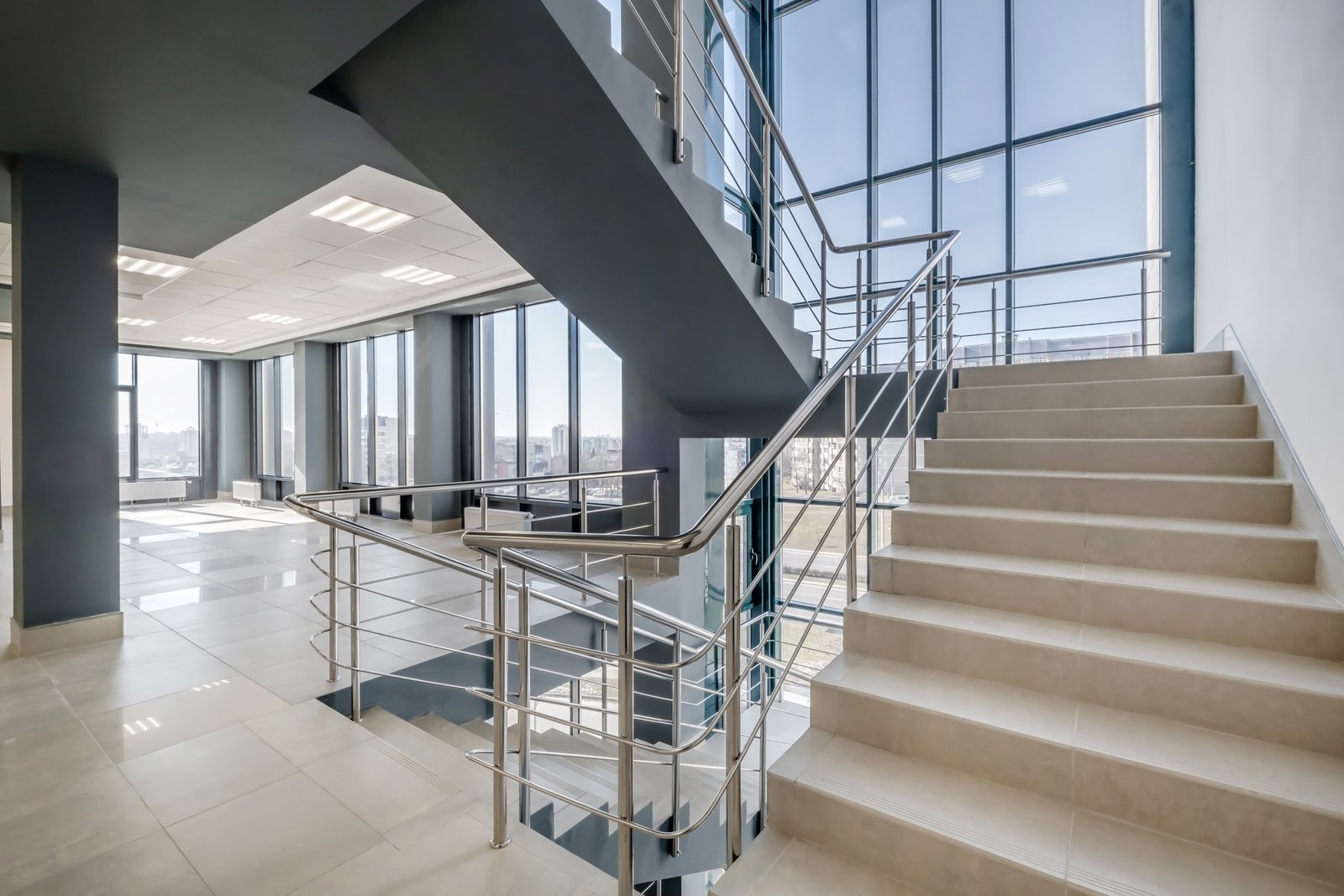
Beyond Simple ROI: Understanding Net Present Value (NPV)
Net Present Value (NPV) is a cornerstone of capital budgeting. Its primary function is to determine the current value of all future cash flows generated by an investment, minus the initial capital outlay. In essence, it answers the question: "What is the total value of this investment in today's money?" To calculate NPV, you need to project the net cash flow (gains minus costs) for each year of the machine's expected life. Then, you discount each of those future cash flows back to the present using a specific discount rate.
The discount rate is a critical variable, typically representing your company's cost of capital or a required rate of return. A positive NPV indicates that the projected earnings from the investment, expressed in today's dollars, exceed the anticipated costs. Simply put, if NPV is greater than zero, the investment is expected to be profitable and should be considered. For example, an investment of $500,000 that generates discounted cash flows worth $600,000 has an NPV of $100,000, making it a financially attractive project.
One of our clients, a large EPC contractor in the Middle East, uses NPV as their primary decision-making tool. When considering one of our heavy-duty tube mills, they projected cash flows over a 10-year period. Using their corporate discount rate of 10%, they calculated an NPV of over $1.2 million. This overwhelmingly positive figure made the decision straightforward, as it clearly showed the immense long-term value the investment would create for the company, far beyond what a simple ROI or payback period could illustrate.
Internal Rate of Return (IRR) as a Performance Benchmark
The Internal Rate of Return (IRR) is another powerful metric that is intrinsically linked to NPV. The IRR is the discount rate at which the Net Present Value of all cash flows (both positive and negative) from an investment equals zero. In simpler terms, it's the expected compound annual rate of return that an investment will generate. If your calculated IRR is 25%, it means the investment is projected to yield a 25% return annually over its life.
The primary advantage of IRR is that it provides a single percentage figure that can be easily compared against other benchmarks. Most companies have a "hurdle rate," which is the minimum acceptable rate of return for any new project. If the IRR for the tube mill investment is higher than your company's hurdle rate, the project is generally considered a go. For instance, if your hurdle rate is 15% and the projected IRR for the new machine is 22%, it's a clear signal that the investment is expected to perform well above your minimum requirements.
IRR is particularly useful when comparing multiple investment options. Imagine you are choosing between two different tube mills. Machine A has an IRR of 18%, while Machine B, with higher automation and efficiency, has an IRR of 24%. Even if Machine B has a higher initial cost, its superior IRR indicates that it will generate value more efficiently over time. This allows you to make a decision based not just on cost, but on the overall performance and efficiency of the capital you are deploying.
Payback Period vs. Break-Even Point: A Critical Distinction
While often used interchangeably in casual conversation, the "Payback Period" and the "Break-Even Point" are distinct concepts in financial analysis. The Break-Even Point, as we've discussed, is the point in time at which total revenues equal total costs. It is the moment you stop losing money and start making it. The calculation typically includes non-cash expenses like depreciation. It’s primarily an accounting concept used for internal planning and target-setting.
The Payback Period, on the other hand, is a capital budgeting metric focused exclusively on cash flow. It measures the length of time it takes for an investment's cumulative cash inflows to equal the initial cash outlay. It ignores profits and depreciation and focuses solely on how quickly the initial cash investment is returned to the company's coffers. A shorter payback period is generally preferred as it indicates lower investment risk and faster liquidity.
Why does this distinction matter? An investment might reach its accounting break-even point in 12 months, but if the cash collection from the new sales is slow, the cash payback period could be 15 months. For companies with tight cash flow, the Payback Period is a critical measure of risk. However, its major flaw is that it completely ignores any cash flows that occur after the payback period has been reached. An investment could have a quick payback but be less profitable overall than another investment with a longer payback period. This is why a balanced analysis using Payback Period for risk assessment, and NPV and IRR for long-term profitability, provides the most complete picture for making a sound investment decision.
What strategies can maximize ROI for tube manufacturing machinery investments?
You've made the investment, but now the real work begins. Simply installing a new machine doesn't guarantee optimal returns. You're concerned about leaving money on the table through inefficient operations, missed opportunities, or underutilization of the new technology's features. How do you actively manage the asset to squeeze out every drop of potential profit?
To maximize your ROI, focus on three strategic areas: aggressively leveraging automation in tube manufacturing to reduce labor costs and errors, relentlessly minimizing material waste through the machine's precision capabilities, and actively exploiting the equipment's flexibility to enter new, higher-margin markets and product categories.
Your new tube mill isn't just a piece of equipment; it's a catalyst for operational transformation. The highest returns come to those who view the machine not as a replacement, but as a new platform for excellence. It’s about building new processes and skills around the technology's capabilities. I’ve seen some clients install a state-of-the-art machine and try to run it with old-world processes, and their results are always suboptimal. The clients who achieve spectacular returns are those who embrace the change fully. They retrain their teams, re-engineer their workflow, and get creative with the new possibilities the machine unlocks. This proactive, strategic approach ensures that you're not just getting a return on your investment, but that you are maximizing it at every possible turn.
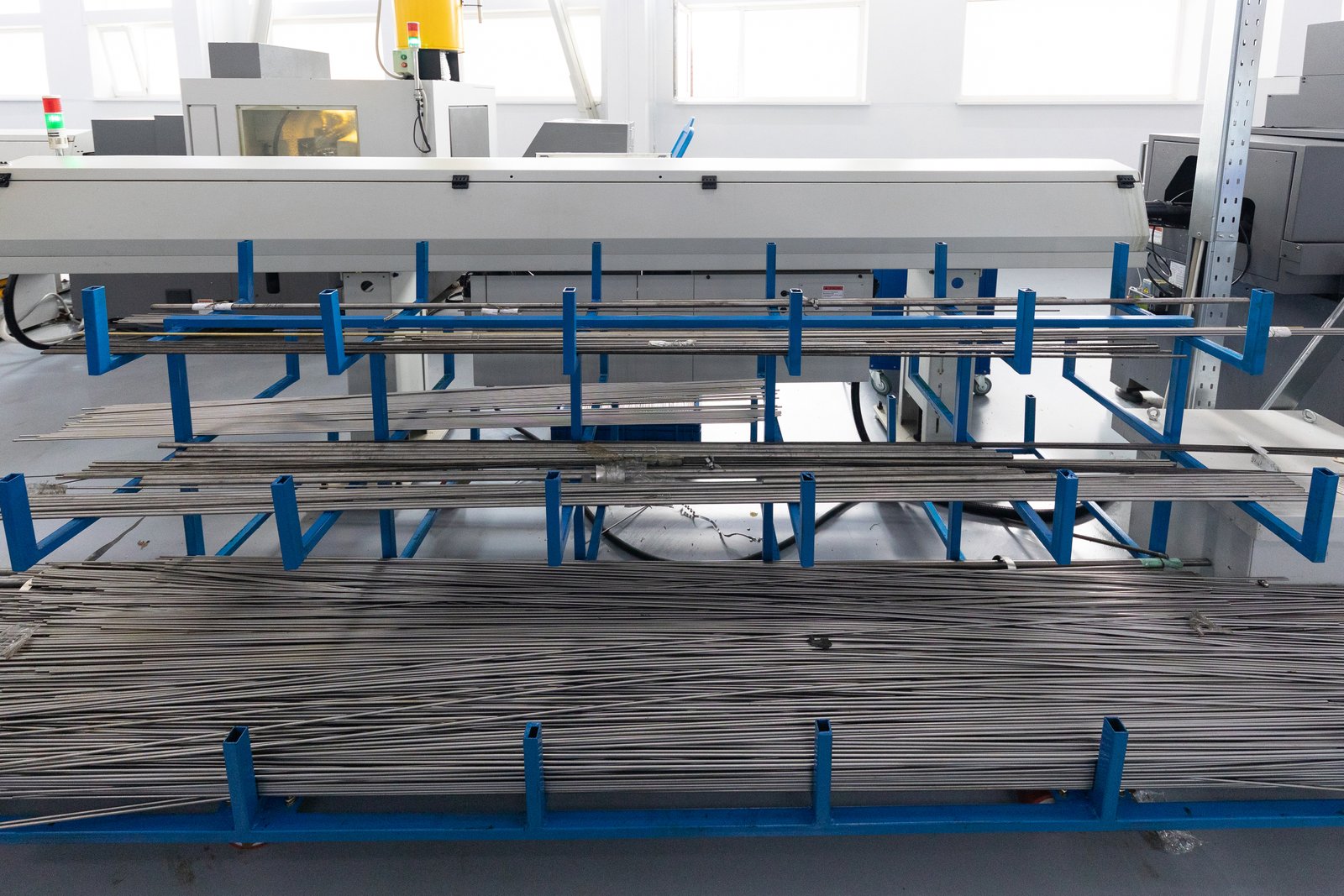
Leveraging Automation for Labor Cost Reduction and Quality Improvement
One of the most direct paths to maximizing ROI is through the intelligent application of automation. Modern tube production lines, like our fully automated PLC + touch-screen controlled systems, are designed to minimize the need for manual intervention. This immediately reduces direct labor costs, as operators can often oversee multiple machines or be reassigned to more complex, value-added tasks like quality assurance or machine programming. The goal should be to conduct a full workflow audit for manufacturing automation8 to identify every manual touchpoint that the new machine can now handle, from loading raw materials to cutting and stacking finished tubes.
Beyond labor savings, automation is a powerful tool for improving quality and reducing costly errors. An automated system executes a process with the same precision every single time, eliminating the variability and potential for mistakes inherent in manual operations. This leads to a more consistent product, fewer rejections from quality control, and ultimately, happier customers. A furniture manufacturer in Southeast Asia who installed our tube polishing machine reported a 90% reduction in surface finish defects, which had previously been a major source of customer complaints and costly rework.
Furthermore, the data generated by automated systems is a goldmine for continuous improvement. The PLC can track production rates, error codes, and operational parameters, providing you with real-time insights into the health and performance of your line. By analyzing this data, your team can identify bottlenecks, predict maintenance needs before they cause downtime, and fine-tune settings to optimize speed and quality. This data-driven approach, enabled by automation, transforms your operation from reactive to proactive, constantly pushing the boundaries of efficiency and maximizing your return.
Minimizing Material Waste Through Precision Engineering
In tube manufacturing, raw material is often the single largest component of your cost of goods sold. Therefore, every fraction of a percent you can save in material waste has a direct and significant impact on your bottom line. Maximizing ROI requires a relentless focus on leveraging the precision capabilities of your new equipment. A machine with a guaranteed tolerance of ≤ ±0.05 mm, like our precision tube mills, allows you to work closer to the minimum required wall thickness without risking product failure, saving material on every meter of tube produced.
This pursuit of precision extends to the entire process. Consider the scrap generated at the beginning and end of each coil (head and tail scrap). Advanced tube cutting and scrap minimization systems9 can minimize this. Similarly, precise and clean cutting technologies reduce the amount of material lost in the finishing process. We worked with a client producing tubes for heat exchangers who, by upgrading to one of our lines, reduced their overall scrap rate by 3 percentage points. This single improvement boosted their product margin by nearly 5% and was the largest single contributor to their rapid ROI.
To truly maximize this, you must instill a "precision culture" in your team. Operators should be trained to understand and trust the machine's capabilities. Quality control processes should be adapted to verify these new, tighter tolerances. By making material efficiency a key performance indicator (KPI) for the production team, you ensure that the technological advantage of the machine is fully exploited every single day, continuously feeding savings directly to your profit line.
Exploiting Flexibility for New Market Opportunities
A truly strategic investment doesn't just make you better at what you already do; it opens doors to what you could do. The flexibility of modern tube manufacturing machinery is an often-underutilized key to maximizing ROI. Features like quick-change tooling and the ability to handle a wide range of diameters and materials on a single line are not just conveniences—they are strategic assets. This flexibility allows you to pivot quickly to meet new customer demands or enter niche markets without a massive new capital investment.
I encourage my clients to think like entrepreneurs. Once the new machine is running efficiently for their core products, they should ask, "What else can we make?" A producer of standard construction-grade carbon steel pipes, after installing one of our HF carbon steel pipe welding lines with flexible sizing, found they could also produce higher-margin, specialized tubing for the agricultural equipment sector with minimal setup changes. This created an entirely new revenue stream from an asset they already owned.
To execute this strategy, your sales and business development teams must be educated on the full capabilities of the new machine. They should be actively seeking out opportunities in adjacent markets that you can now serve competitively. This could mean prototyping for a new industry, taking on smaller, custom-run jobs that were previously unprofitable, or offering a wider range of products to your existing customers. By viewing your machine as a platform for growth, not just a tool for production, you transform a one-time capital expense into a perpetual engine for revenue diversification and profit maximization.
What best practices ensure effective ROI tracking and management in tube manufacturing?
You've created a great ROI projection and have strategies to maximize it. But a plan is useless without execution and monitoring. You worry that without a disciplined tracking system, the projected gains will slowly erode due to operational drift, market changes, or a lack of accountability.
Effective ROI management requires implementing robust tracking systems and a culture of continuous improvement. This involves using real-time production monitoring, conducting regular financial audits against your initial projections, and consistently investing in operator training to ensure the machinery's full potential is always being utilized.
The period after installation is when the real work of realizing your ROI begins. An investment doesn't manage itself. Achieving and exceeding your financial targets requires ongoing vigilance and a structured approach to performance management. It’s like navigating a ship; you have a destination (your projected ROI) and a map (your financial model), but you still need to constantly check your instruments and make course corrections along the way. The most successful manufacturers I know are disciplined in this phase. They treat their ROI projections not as a one-time document to get a purchase approved, but as a living management tool to guide their operational and financial performance month after month.
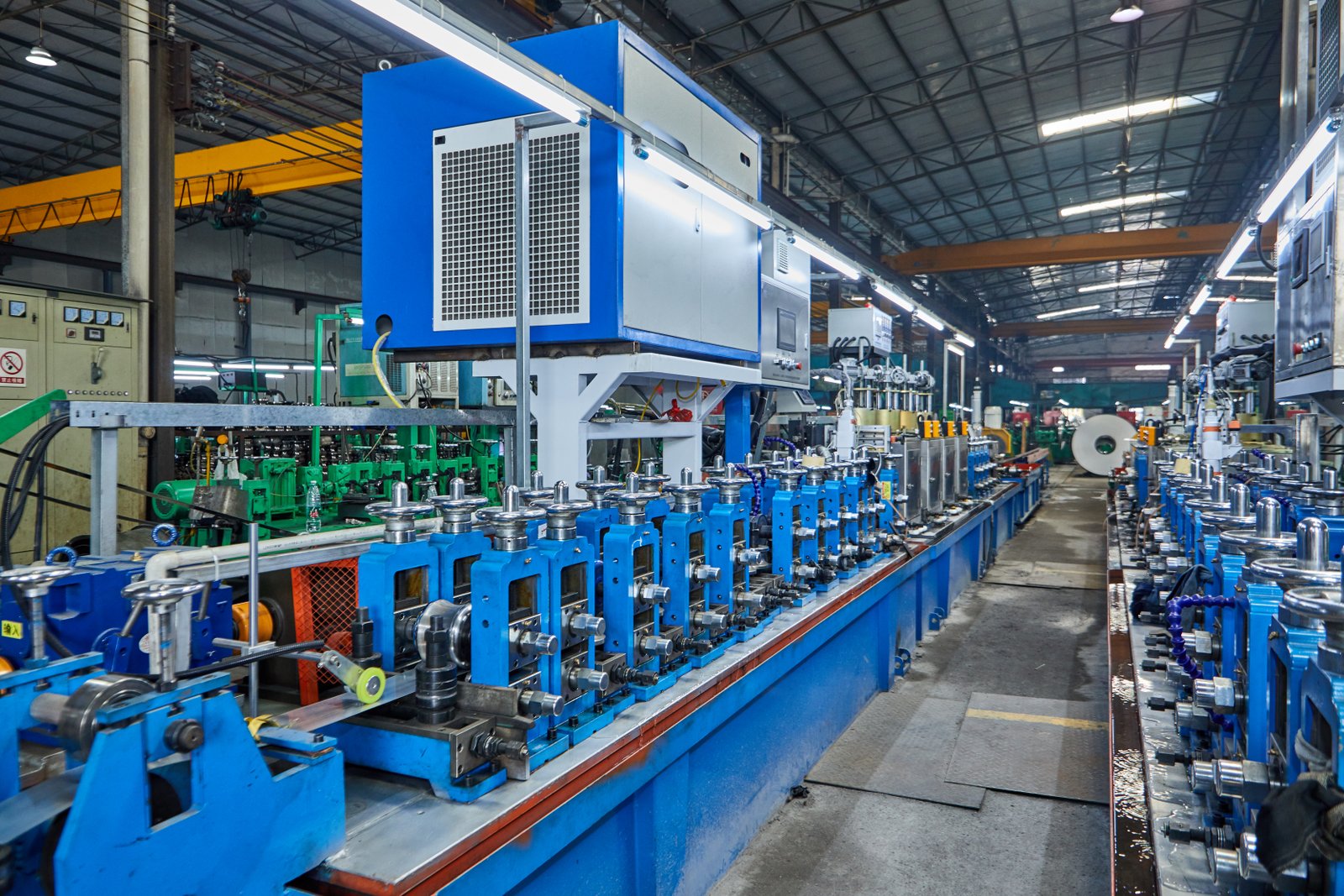
Implementing Real-Time Production Monitoring Systems
You cannot manage what you do not measure. The single most effective best practice for ROI management is the implementation of a real-time production monitoring system. Modern automated tube mills, with their integrated PLC controls, are data-generating powerhouses. This data needs to be captured, visualized, and acted upon. The system should track Key Performance Indicators (KPIs) in real-time, displaying them on dashboards accessible to both operators and managers. Critical KPIs include Overall Equipment Effectiveness (OEE), production rate (tons per hour), scrap percentage, and uptime/downtime reasons10.
This real-time visibility allows for immediate intervention. If the scrap rate suddenly inches up by half a percent, the system should flag it. The team can then investigate and correct the issue in minutes, rather than discovering the problem at the end of the shift or, even worse, at the end of the month when the financial reports come out. This prevents small deviations from snowballing into significant financial losses, thereby protecting your projected ROI.
Furthermore, this data provides an objective basis for decision-making. I remember a client who believed their changeovers were efficient. After implementing a monitoring system, they discovered that the actual time was 40% longer than they thought, mostly due to delays in getting the right tools and materials to the line. By seeing the hard data, they were able to implement a kitting process that streamlined the changeovers, directly boosting production capacity and moving them ahead of their ROI schedule. This is the power of turning raw machine data into actionable operational intelligence.
Conducting Quarterly ROI Audits
Your initial ROI projection is your baseline. To ensure you stay on track, you must conduct regular, formal audits to compare your actual performance against that baseline. I recommend a quarterly frequency for this. A quarterly ROI audit is a meeting of key stakeholders—production, finance, and sales—to review the numbers. The finance department should prepare a report that directly compares the projected monthly savings and revenue with the actual results.
The purpose of this audit is twofold. First, it creates accountability. When everyone knows the numbers will be reviewed, teams are more focused on hitting their targets. If material savings are below projection, the production manager must explain the variance and present a plan for improvement. If new sales revenue is lagging, the sales team needs to account for their pipeline and strategy. It keeps the entire organization aligned and focused on the financial success of the investment.
Second, these audits allow you to update your forecast with real-world data. Perhaps energy costs have risen faster than expected, or maybe you secured a more profitable contract than you initially projected. By regularly updating your financial model, you maintain a realistic picture of where you will land at the end of the year. This allows for proactive financial planning and prevents year-end surprises, ensuring the investment's performance is managed with the same rigor as any other part of the business.
Continuous Improvement and Operator Training Programs
The final best practice is recognizing that a machine is only as good as the team that operates it. Your machinery investment should be paired with an ongoing investment in your people. Technology evolves, and your team's skills must evolve with it. Initial training at the time of installation is essential, but it shouldn't be a one-time event. A continuous improvement culture, supported by regular training, is key to unlocking the full, long-term potential of the equipment.
Schedule regular refresher courses for experienced operators and a structured training program for new hires. This training should cover not just basic operation, but advanced topics like optimizing settings for different materials, efficient troubleshooting of common error codes, and best practices for preventative maintenance. At XZS, we support this through our after-sales service, including technical webinars and on-site support, to ensure our clients' teams are always operating at peak performance.
Encourage operators to be part of the improvement process. They are the ones on the front line and often have the best ideas for small tweaks that can lead to big gains in efficiency and quality. A simple suggestion box or regular team huddles to discuss performance can yield incredible results. When your team is engaged, skilled, and motivated to get the most out of the machine, they become the ultimate guardians of your ROI, constantly finding new ways to improve performance and drive profitability long after the initial investment has been paid back.
Conclusion
Ultimately, achieving a 12-month break-even and maximizing ROI is a fusion of smart technology and strategic management. It requires rigorous financial analysis upfront, a relentless focus on operational efficiency, and a commitment to tracking performance and continuously improving your processes and people.
-
Learn standard methods and formulas for ROI calculation in tube manufacturing equipment ↩
-
Understand all cost components involved in the TCO for accurate investment planning ↩
-
Get practical tips on quantifying cost savings from advanced and automated production lines ↩
-
Discover what influences payback periods for tube manufacturing machinery in real-world scenarios ↩
-
Find best practices and templates for building monthly cash flow models for automation projects ↩
-
Understand how maximizing uptime and output accelerates equipment ROI and cash flow ↩
-
Learn about critical variables that impact investment analysis accuracy and financial outcomes ↩
-
Understand how workflow audits identify automation opportunities and optimize production staffing ↩
-
See the latest solutions and equipment for reducing waste in tube manufacturing operations ↩
-
Discover which KPIs drive productivity and help identify losses in tube production environments ↩
